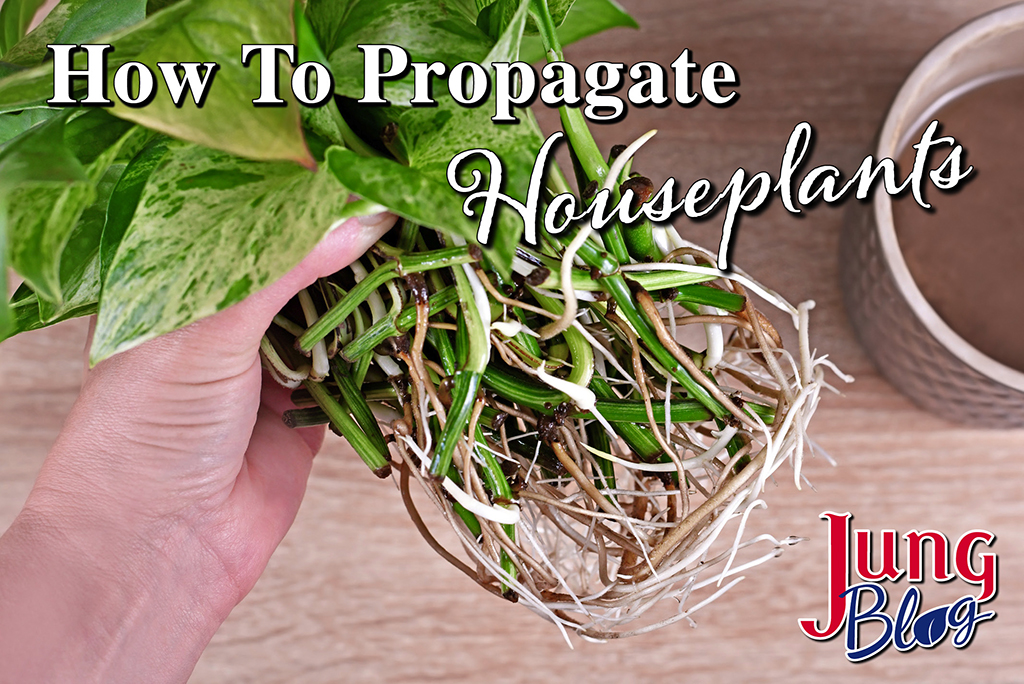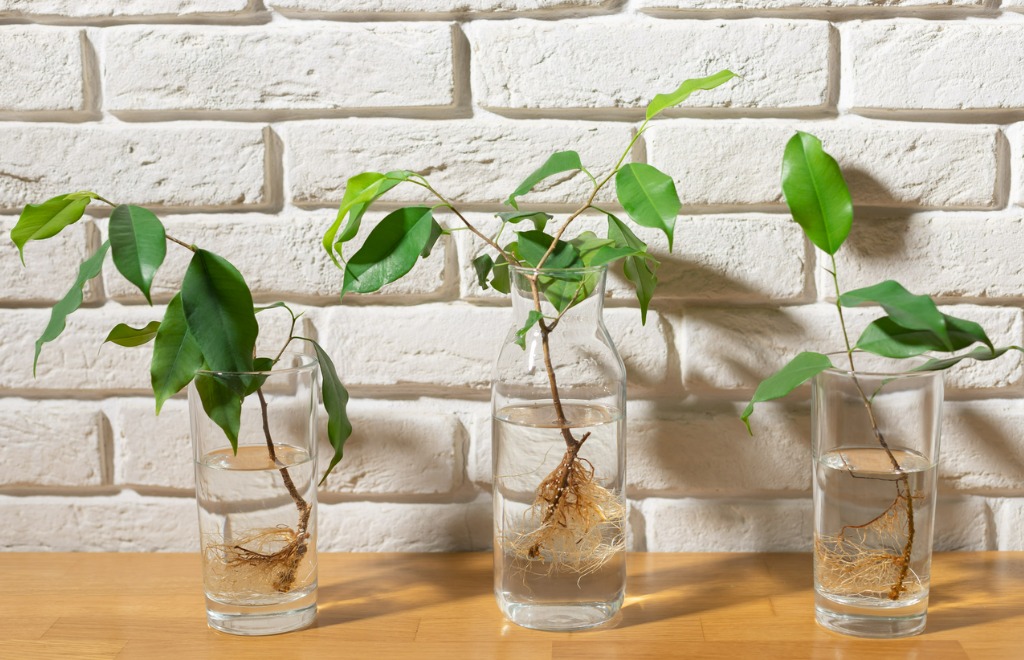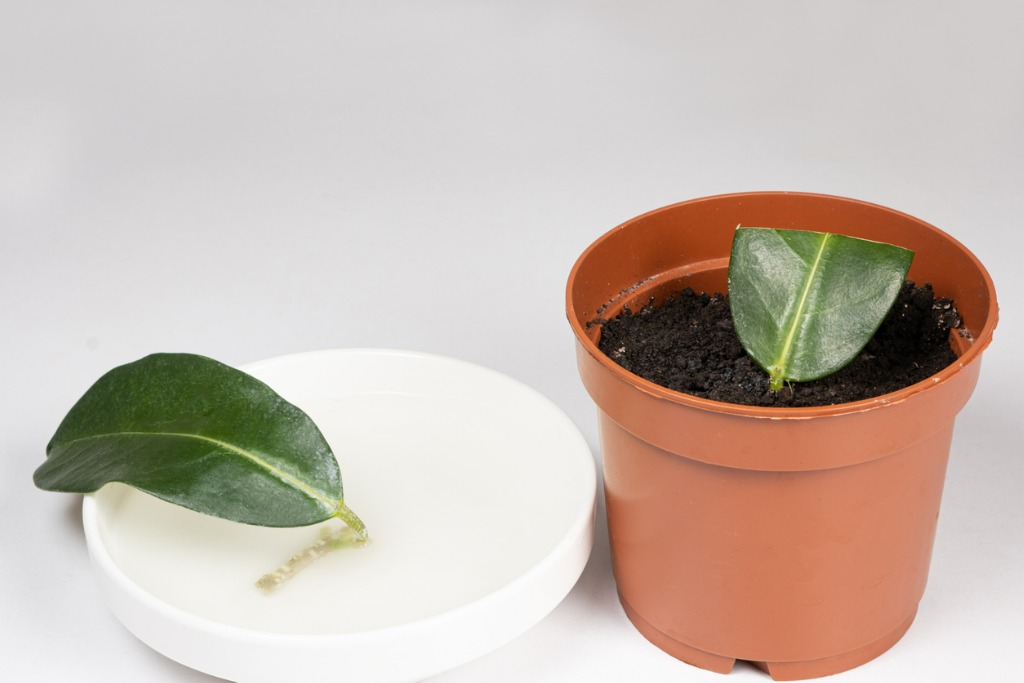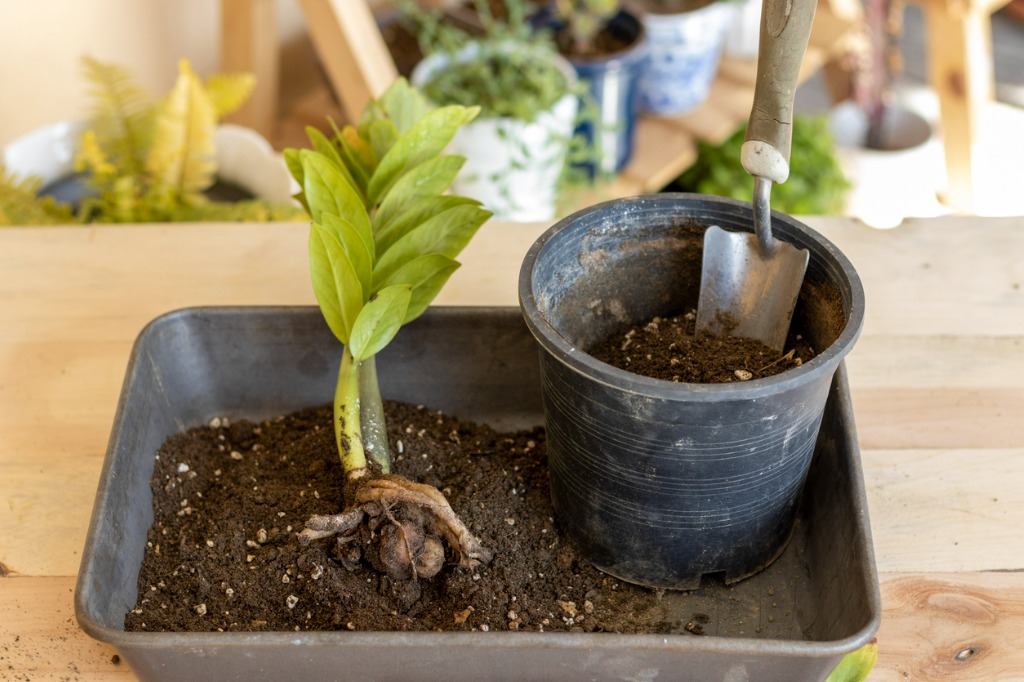
Updated: December 17, 2024
Houseplants keep growing in popularity, and it’s no surprise when you consider how many new and improved plants are becoming available each year. Also, studies have shown houseplants provide many health benefits, like reduced stress and better air quality for your home. As winter settles in, you may think of ways to grow your houseplant collection or make your living space greener. Now is a great time to propagate your plants to fill empty spots in your home or share with family and friends.
Propagation is a term that refers to plant reproduction, which occurs by seeds or vegetative methods. Today, we’ll be looking at a few common types of propagation for houseplants, including stem and leaf cuttings, along with division. These forms of propagation are vegetative methods that produce clones, meaning they have the same genetics as the parent plant and retain the same characteristics.
Types of Propagation

Stem Cuttings
This type of cutting is a piece of the stem taken off the main plant and put into soil or water to create a new plant. We can use this method for various houseplants, including Pothos, Philodendrons, Dracaena, Holiday Cactus, Schefflera, and Ficus trees. Before you take cuttings, having the right media (soil) and container size is essential.
Containers
Cuttings are small and have no roots, so you’ll want a small container for planting to prevent the cuttings from staying too wet (A plastic cup or small nursery pot is ideal). Your media should drain well but also retain moisture.
Potting Soil
Potting soil likes to retain water, so consider adding perlite to give your cuttings additional drainage. A ratio of 1 part perlite to 2 parts potting soil will increase drainage and retain moisture. You can even root cuttings in straight perlite if you maintain high humidity levels around the plant. (This can be accomplished by placing a clear bag over the cutting to create a mini greenhouse).
Steps for Cutting & Planting Stems
Here are the steps for taking stem cuttings and planting them.
- Select a 3–6-inch part of the stem (stem tips are ideal, but you can use lower portions of the stem too). When you take the cutting, make sure the stem has at least two nodes (leaf buds).
- Strip the lower leaves to create a bare stem toward the cutting’s base and dip the bottom of the cutting in rooting powder. (This step is optional but can speed up rooting.)
- Plant the cutting into the media with at least one node under the soil (Roots will grow from the node). Media can get hydrophobic when it’s dry, so moisten the media before you stick the cutting in it.
- After the cutting is stuck in the media, water it and allow it to drain.
- Put the cutting in a warm place with indirect light and place a plastic bag over the top to increase the humidity.
- Check the cutting daily to determine if it needs water (The soil should always be moist, not wet or soggy). Your cuttings should root in 3-6 weeks, depending on the species.
- As the roots form and grow, you can leave the cutting in the small pot until the roots fill the container; then, it’s time to transplant to a slightly larger pot. If you’re growing the cutting in perlite, it’s best to transplant when the roots are about an inch long.

Cuttings in Water
This method allows you to watch the roots grow, which is a great way to involve kids in growing plants. To root in water, you stick the cutting in a glass of water and change the water every 3-4 days.
After the roots have grown, you can transplant them into regular media. Just remember, the roots formed in water are slightly different and may have difficulty adjusting to traditional media, so you may need to give them extra care after moving them from the water to the media. You can move the cuttings into the media when the roots are about one inch long.

Leaf Cuttings
Certain plants can be propagated from a leaf, making it easy to create lots of new plants. Like stem cuttings, certain plants, including African Violets, Succulents, ZZ plants, and Peperomia, will easily root using this method.
Steps for Leaf Cuttings
The steps for leaf cuttings are similar to stem cuttings but with a few differences.
- A leaf-cutting often includes the petiole (the short stem-like piece that connects the leaf to the main stem). The petiole is where new roots will emerge in some species. A great example is African Violet.
- Succulents often don’t need a petiole to root. Jade plants have leaves you can pull off the plant and lay on top of the media, and they’ll root. The same is true for other succulent species, like Echeveria.
- Once they’re planted, you can follow the same care tips as stem cuttings.

Division
Division is the quickest way to get new and fully rooted plants since you’re just dividing an existing plant into smaller plants. This method works best on species that grow in clumps, like spider plants, aloe, ferns, peace lily, and birds of paradise.
Outdoor perennials are often propagated using the same method when they become too large, or you want more plants. Division is also a great way to rejuvenate older plants that are losing vigor since the new divisions will be more juvenile and eager to grow.
Steps for Dividing Houseplants
Here are the steps for dividing houseplants. (These steps also apply to outdoor plants being grown in the garden).
- Remove the plant from its container and cut it into smaller pieces using a knife or saw to cut the rootball (Make sure each piece has some leaves and roots).
- Once the plant is divided, you can place each new plant into smaller containers and water them.
- Give the plants bright but indirect light for a few weeks until they have recovered. Then, after a few weeks, you can move them to brighter light if they’re a sun-loving species.
Propagation is a fun way to create new plants, reduce the winter blues, and develop your green thumb!
Other Recommended Reading

- 8 Tips For Bringing Houseplants Indoors For Winter
- 4 Festive Holiday Plants
- Grow Light Basics
- Creating Winter Interest In Your Landscapes
- How To Create Winter Container Displays

At Jung Seed Co, we strive to be your go-to guide for all your gardening needs. Our YouTube channel The Garden Doctor by Dick Zondag is where he provides gardening tips for all levels of gardeners. When you need reliable gardening advice, turn to the trusted experts at Jung.
View our new catalog online or browse our website for your gardening favorites. To receive info on new products, exclusive deals, and specials, be sure to sign up for our weekly email. Join our Facebook page, to discuss all things gardening!
About the Author: Matthew Olson is a professional horticulturist and garden writer. He has a bachelor’s degree in horticulture from UW-River Falls and is a certified professional with the Minnesota Nursery and Landscape Association. His enthusiasm for plants and the outdoors brought him to the green industry. He regularly writes articles about gardening for both gardeners and industry professionals. He can be reached at matt@mattolsonhorticulture.com.